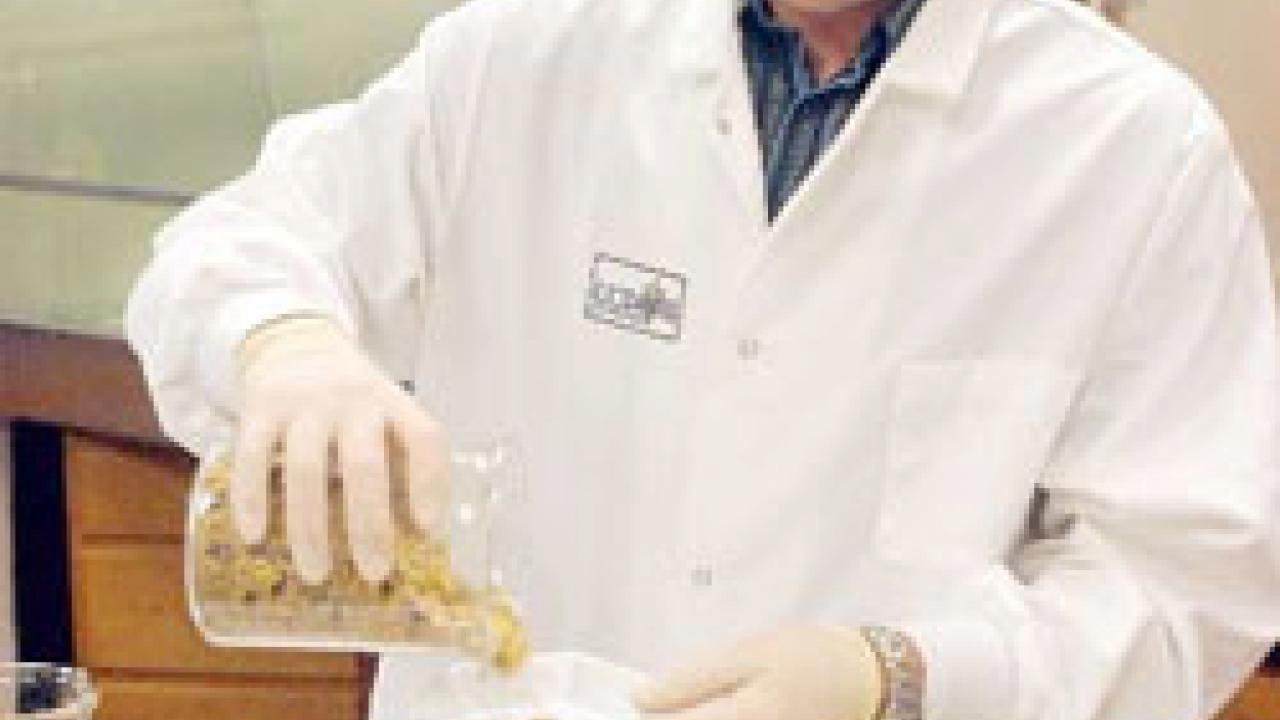A highly sensitive analytical test that detects minute amounts of animal-protein contamination in livestock feed has been developed by a team of researchers at UC Davis in hopes of better protecting the nation's food supply against mad cow and similar diseases.
The test uses DNA analysis to identify protein from ruminants -- cows, sheep, goats and deer -- in feed products intended to be eaten by other ruminants. The use of ruminant protein in livestock feed has been banned in the United States since 1997, because evidence suggests that livestock feed containing material from the carcasses of animals infected with mad cow disease can transmit the disease to healthy animals and, in turn, to humans.
A paper reporting development of the test is now under review by a peer-reviewed scientific journal. The University of California also has filed a patent application on the new procedure, which might be available for commercial use late this year.
"This test provides feed processors and regulators with a powerful tool for protecting livestock and consumers from mad cow disease," said Jim Cullor, a veterinary professor who led the team that developed the test at UC Davis' School of Veterinary Medicine. "It combines speed, accuracy and molecular biology attributes that are not available in any of the existing analytical tests for livestock feed."
Prion diseases
Mad cow disease, also known as bovine spongiform encephalopathy (BSE), was first recognized in Great Britain in 1986. The epidemic of BSE that followed involved more than 178,000 cattle there and spread to other European nations.
BSE is caused by misshapen proteins called prions. The prions cause disease by triggering a slow-developing chain reaction of similar protein mutations. The prions eventually accumulate in the brain and cause debilitating neurological symptoms and death. Sheep and goats are vulnerable to a prion disease called scrapie, deer and elk to chronic wasting disease and cows to mad cow disease or BSE.
Slightly more than 150 humans, worldwide, have contracted the fatal prion disease called new variant Creutzfeldt-Jakob disease, most of these cases occurring in Great Britain. It is believed these people became infected with prions by eating meat from cows that had BSE.
New feed test
Up until now, federal regulators have used either microscopic analysis or more rapid antibody-based tests to monitor feeds for contamination. Both types of tests have their drawbacks. The microscopic analysis, which looks for bones, hair and muscle tissue, is a tedious process that can take days to perform. The antibody tests are much quicker, but may fail to detect contamination if it occurs at levels lower than 1 percent.
To overcome both the time and accuracy problems, the UC Davis researchers used a technique called polymerase chain reaction (PCR), which makes it possible to replicate selected stretches of DNA and accurately identify them. This is a technique that has been commonly used for more than a decade in a broad spectrum of studies.
In this project, the researchers spiked seven different cattle feeds with predetermined amounts of meat and bone meal from cows, as well as meal rendered from fish, sheep, and poultry, and dried blood from pigs and cattle. DNA was then extracted from each of the spiked feed samples and replicated via PCR.
Further developments are allowing the test to detect ruminant DNA contamination well below 0.5 percent by weight.
One of the hurdles the researchers had to overcome in developing this test was the presence of "inhibiting substances" that occur naturally in the uncontaminated feed. These compounds interfere with the sensitivity of the PCR process, yielding false negative results. The researchers were able to identify these substances and chemically treat the feed samples so that the PCR tests would yield accurate readings.
In addition to Cullor, the UC Davis research team included Dairy Food Safety Laboratory staff researchers Mary Sawyer, Wayne Smith and graduate student Gabriel Rensen, as well as Bennie Osburn, dean of the School of Veterinary Medicine. The research was supported by grants from The Bernice Barbour Foundation and The California Dairy Research Foundation.
